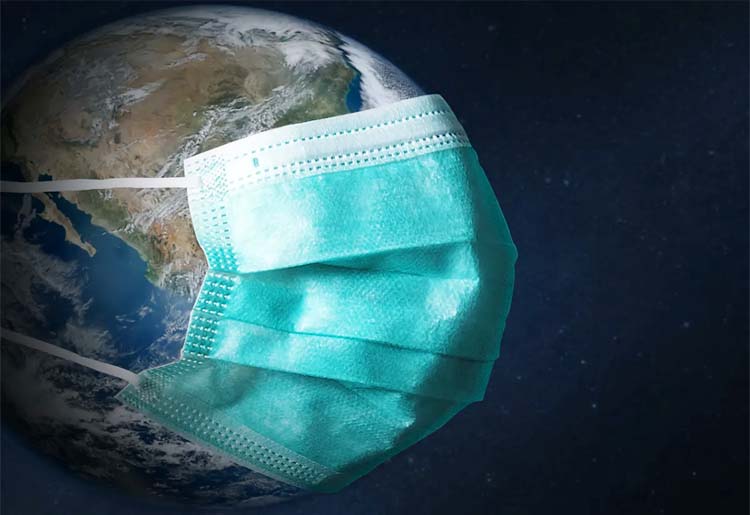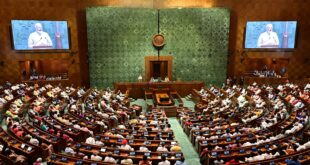
Dr. Seema Javed
2011-2020 is the warmest decade on record, with the 2020 being the warmest year in last three years. This was revealed in the “State of the Global Climate 2020” by World Metrological Organisation(WMO). The report says that since 2015, temperatures have been rising due to climate change and each year is getting warmer than the previous one.
The report, which is based on contributions of dozens of international organizations and experts, shows how high-impact events including extreme heat, wildfires and floods, as well as the record-breaking Atlantic hurricane season, affected millions of people, compounding threats to human health and security and economic stability posed by the COVID-19 pandemic.
Despite the COVID-19 lockdown, atmospheric concentrations of greenhouse gases continued to rise, committing the planet to further warming for many generations to come because of the long lifetime of CO2 in the atmosphere, according to the report.
“The average global temperature in 2020 is set to be about 1.2 °C above the pre-industrial (1850-1900) level. There is at least a one in five chance of it temporarily exceeding 1.5 °C by 2024,” said WMO Secretary-General Prof. Petteri Taalas.

“This year is the fifth anniversary of the Paris Agreement on Climate Change. We welcome all the recent commitments by governments to reduce greenhouse gas emissions because we are currently not on track and more efforts are needed.”
“2020 has, unfortunately, been yet another extraordinary year for our climate. We saw new extreme temperatures on land, sea and especially in the Arctic. Wildfires consumed vast areas in Australia, Siberia, the US West Coast and South America, sending plumes of smoke circumnavigating the globe.
We saw a record number of hurricanes in the Atlantic, including unprecedented back-to-back category 4 hurricanes in Central America in November. Flooding in parts of Africa and South East Asia led to massive population displacement and undermined food security for millions,” he said.
Commenting on the report Dr.AnjalPrakash a climate scientist working in south Asia and coordinating lead author of the IPCC’s special report on oceans and in IPCC’s 6th Assessment report said-
“This report reaffirms the findings of IPCC’s SROCC report and updates the science since its publication in 2018. The report shows that oceans and cryosphere are an important and critical component of global ecology. They regulate global climate and weather; the ocean is the primary source of rain and snowfall needed to sustain life on land, and uptake of heat and carbon into the ocean has so far limited the magnitude of anthropogenic warming experienced at the Earth’s surface. What happens to these two systems have a huge bearing on humanity.
There are two ways in which we see these – first there are direct dependence of communities on these two resources – around 670 million people in high mountain regions and 680 million people in low-lying coastal zones depend directly on these systems. Four million people live permanently in the Arctic region, and small island developing states are home to 65 million people.
The report has implications for people living in India. It has the seventh longest coastline in Asia to the tune of 7,500 KM. There are 9 coastal states and 2 Union Territories in India that has a population of about 560 mn. In 2014, around 177 mn people lived in coastal districts and 0.44mn lived in island territories in India which are considered to be at a greater risk based on the report.
On changing nature of cryosphere, one of the direct implications is on the HKH regions that are extremely susceptible to temperature increase. Under a 1.5 °C global warming scenario, the areas are projected to warm up by more than 2 °C on average by the end of this century. At higher altitudes this warming will be even more marked, due to elevation dependent warming. A 2 °C global warming scenario could lead to a warming of around 2.7 °C in glaciated river basins. Currently, more likely climate change scenarios, specific for these river basins, suggest regional temperature increases between 3.5 and 6 °C by 2100.
A pertinent question is what could be done? First and foremost, we must change our approach to build. Our infrastructure must be climate resilient. In climate terms, we call it transformative adaptation which is incremental adaptation and requires system-wide changes or changes in more than one system. In the present case, the planning, implementing and monitoring process must be climate resilient and a systemic overhaul is necessary.”
Ocean heat is at record levels and morethan 80% of the global ocean experienced a marine heatwave at some time in 2020, with widespread repercussions for marine ecosystems already suffering from more acidic waters due to carbon dioxide (CO2) absorption, according to the WMO report.
The sixteenth annual WMO Greenhouse Gas Bulletin reports atmospheric abundances and rates of change of the most important long-lived greenhouse gases, aka LLGHGs, which are: carbon dioxide, methane and nitrous oxide. The Bulletin also provides a summary of the contributions of other greenhouse gases (GHGs).
Carbon, methane and nitrous oxide, together with CFC-12 and CFC-11, account for approximately 96% of radiative forcing (the warming effect on the climate) due to LLGHGs GHGs continue to rise year on year, say the WMO, with this year being no exception despite the temporary slowdown during covid lockdowns. We are still tracking record levels of emissions, which are trapping heat in the atmosphere, increasing temperatures and driving more extreme weather, ice melt, sea-level rise and ocean acidification.
The WMO will report that atmospheric methane has taken another near-record jump, extending a multi-year surge in methane pollution. This follows the Global Carbon Project’s methane assessment findings earlier this year that methane emissions are tracking the worst case IPCC scenarios, leading some climate experts to say that methane reduction plans are now almost as vital as carbon emissions reductions.
Carbon dioxide levels saw another growth spurt in 2019 and the rise has continued in 2020. Since 1990, there has been a 45% increase in total radiative forcing (the warming effect on the climate) by long-lived greenhouse gases, with CO2 accounting for four fifths of this.
(Environmentalist, Independent Journalist & Communications Expert)
 Jubilee Post News & Views
Jubilee Post News & Views





